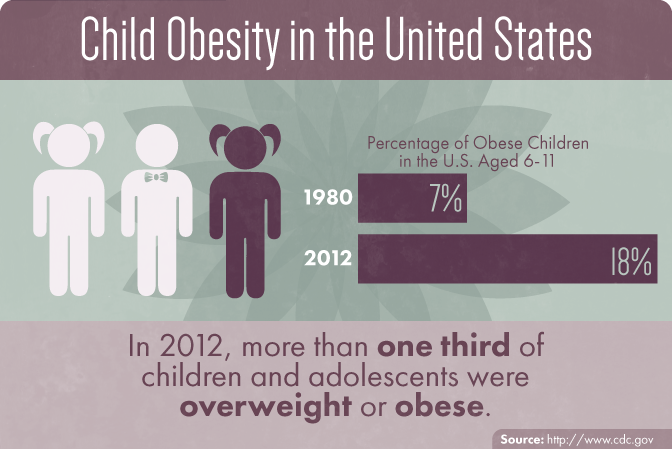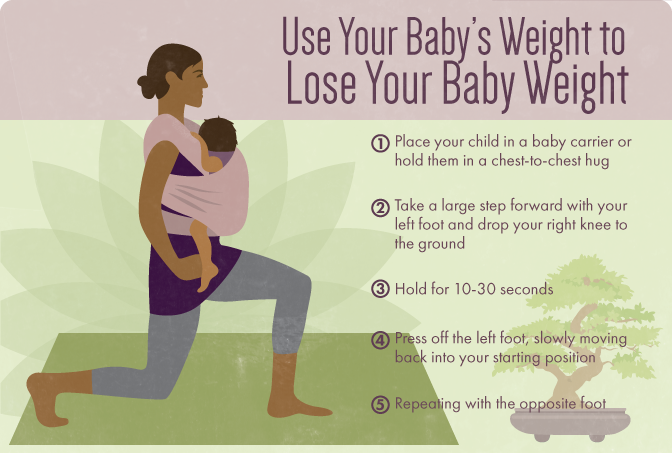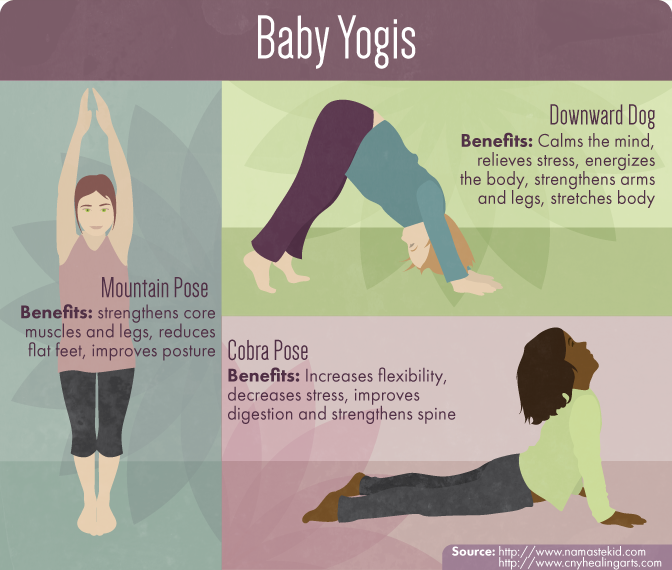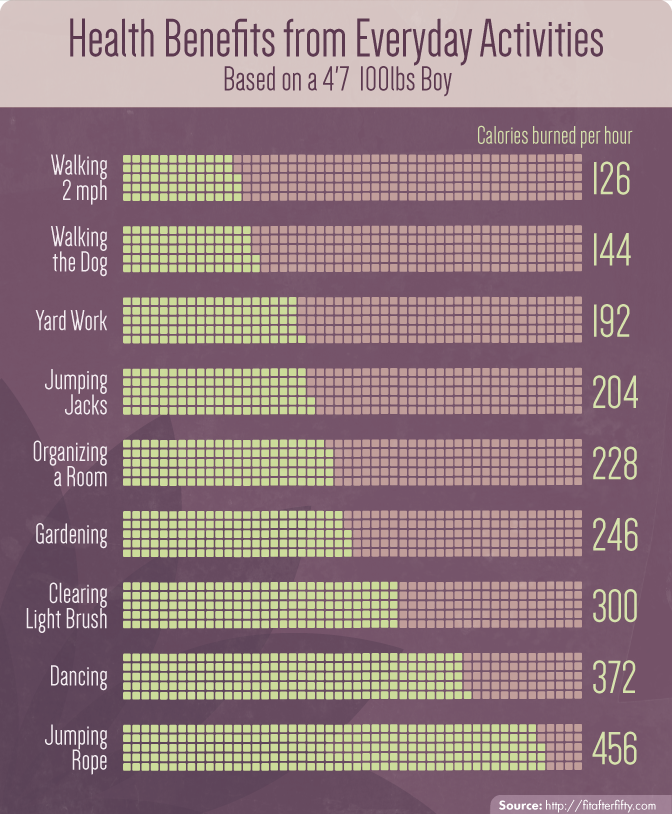Family Friendly Fitness
Starting Your Child Out on the Right Foot
The other day I was doing some chores around the house, and while organizing my workout area, I picked up one of my many yoga mats.
I intended to shake it out and roll it back up, when out of the corner of my eye, I saw a streak
of yellow speeding up to me, about knee-height.
Then, I heard this plea from my blonde-haired toddler tornado:
“YO YO, MAMA, I DO YO YO!”
Two-year-old translation: “Let’s do yoga, mama!”
Her love of workouts truly amazes me, especially because she doesn’t see them as work at all.
She just knows she gets to move around, hang out with her mama, and have some fun.
(A friend of mine calls these bonding sessions PLAYouts – isn’t that a great term?) Frankly, my daughter
doesn’t know any different. She’s been by my side from day one, watching me work out and often joining me.
It took me more than 20 years to really understand the difference between how my body looks and how my body performs.
It was a painful, emotional, and often difficult journey. Today, I’m proud to say that I think of myself as strong,
not skinny; as healthy, not hot. As a fitness professional and a Type A mom, it’s in my nature to try to explain to
my daughter why it’s so important to respect our bodies by eating well and working out. After all, as a society we’re
facing increasing rates of both adult and childhood obesity, and decreased time spent moving our bodies.
According to the Centers for Disease Control and Prevention (CDC):
- Childhood obesity has more than doubled in children and quadrupled in adolescents in the past 30 years.
The percentage of children aged 6 to 11 years old in the U.S. who were obese increased from 7 percent in 1980 to nearly 18 percent in 2012. http://www.cdc.gov/healthyyouth/obesity/facts.htm
- Obese youth are more likely to have risk factors for cardiovascular disease, such as high cholesterol or high blood pressure.
Children and adolescents who are obese are likely to be obese as adults and are therefore more at risk for adult
health problems such as heart disease, type 2 diabetes, stroke, several types of cancer, and osteoarthritis.

And it starts early – one study showed that kids who became obese as early as age two were more likely to be obese as adults.
According to the American Heart Association, all children two and older should participate in at least
60 minutes of moderate-intensity physical activities every day (although the agency also stresses that this
activity should be enjoyable!). That activity doesn’t all have to happen at once, so if you break it into two
30-minute periods or four 15-minute periods, that’s just as effective. http://www.heart.org/
There are, of course, many factors that can lead to people of all ages being overweight or obese,
and not all can be affected by a change in diet and exercise. But some can. And what’s the
downside to making the changes?
So, here are a few ideas to start your own playouts with your kids. (Remember: it’s about fun, not fitness,
and you should always monitor and supervise your children any time they’re doing physical activities.)
Newborn to 12 Months
For infants it’s all about exposure. Although they are still too young to actually do the activities themselves,
having them observe your daily activity will help set a positive precedent for when they are older.
Take walks! Even when they’re newborns (once you’ve gotten the OK from your pediatrician and your own doctor, of course),
babies love being pushed around in their strollers. Not only do they get to be outside in the fresh air, but they’re soaking up
the experience of being with you as you move your body. You can even incorporate the stroller into your own fitness regimen –
try doing five squats while at street corners, balancing your hands on the stroller handlebars. Do jumping jacks so your baby
sees your face pop up and down in front of him. And once your baby is old enough to safely ride in a jogging or running
stroller, try taking him out for a light jog.
Redefine “Baby Weight”! Once your baby is able to hold her head up and has a little more
support in her own body, use her as your weight, instead of free weights or dumbbells. Holding her
close to your body or putting her in a baby carrier, try doing lunge backs, extending one leg behind
you and alternating right and left. Every time you come back to your starting position, kiss your baby on the forehead.

12 Months to 36 Months
Your infant may already be a yogi or yogini – so why not join him on the mat? Happy baby is a yoga
posture that got its name from the pose that many babies take naturally, lying on their backs with their feet
in the air. So, follow your baby’s lead and try this gentle yoga pose. As your infant becomes more aware of his
body, you can even start to move into some other postures – cobra and snake poses can be fun to do with your toddler,
because you can make the “hissssss” sound that a snake would. Eventually, your little one
may be able to do a full sun salutation!

Do you like to dance? Toddlers sure do! Put on your favorite playlist and go crazy. Not only will
you burn some serious calories, you will have a blast. Bonus points if you choreograph a special routine together.
Studies have shown that a child will burn the same amount of calories from dancing as using a treadmill! http://www.kidsandnutrition.co.uk/fun-facts-how-many-calories-does-child-burn.html
Although you probably aren’t going to put your toddler on exercise equipment, this still highlights the benefit of
dancing around your living room!
Three Years to Six Years
Kids this age can start to set goals – so give them challenges! Use chalk to mark out a hopscotch pattern on your driveway,
and see how many times they can jump through the boxes without losing their balance. You can even keep a running tally of points and
make this into a monthly challenge (whoever makes it through the most times gets to pick the Friday night movie).
Jumping rope is deceptively hard, because it takes all of your body’s muscles, plus a good sense of balance.
Jumping rope burns more than 10 calories a minute while strengthening your legs, butt, shoulders, and arms.http://www.shape.com/fitness/cardio/jump-rope-workout-blast-fat-20-minutes So grab a
rope and start jumping. Make sure that you look for signs of frustration, and if you see your child having trouble,
change things around. Put the rope on the ground in a circle and practice jumping in and out of it. You can set a timer
and see how many times you can get in and out in 30 seconds, and then have your child try to beat it. Or lay it out in a
straight line and see if your child can toe-heel walk alongside it without falling over (that’s hard!).
Six Years to Ten Years
For children between the age of six and ten, try getting some exercise in before school! Encourage older kids to take the dog for a walk
around the neighborhood, or they could all walk to school or the bus stop together.
Or how about spending some time in the fresh air planting a garden? Not only will your child benefit from being
exposed to all that vitamin D, but an hour of gardening can burn almost 200 calories in a 90-pound child! http://www.fitnessblender.com/v/article-detail/How-Many-Calories-Does-Gardening-Burn-Calories-Burned-Gardening/56/

Fitness can be fun, especially when it involves the whole family. So go play with your kids and get them on the right path to health and wellness in the years to come!
Embed the article on your site

